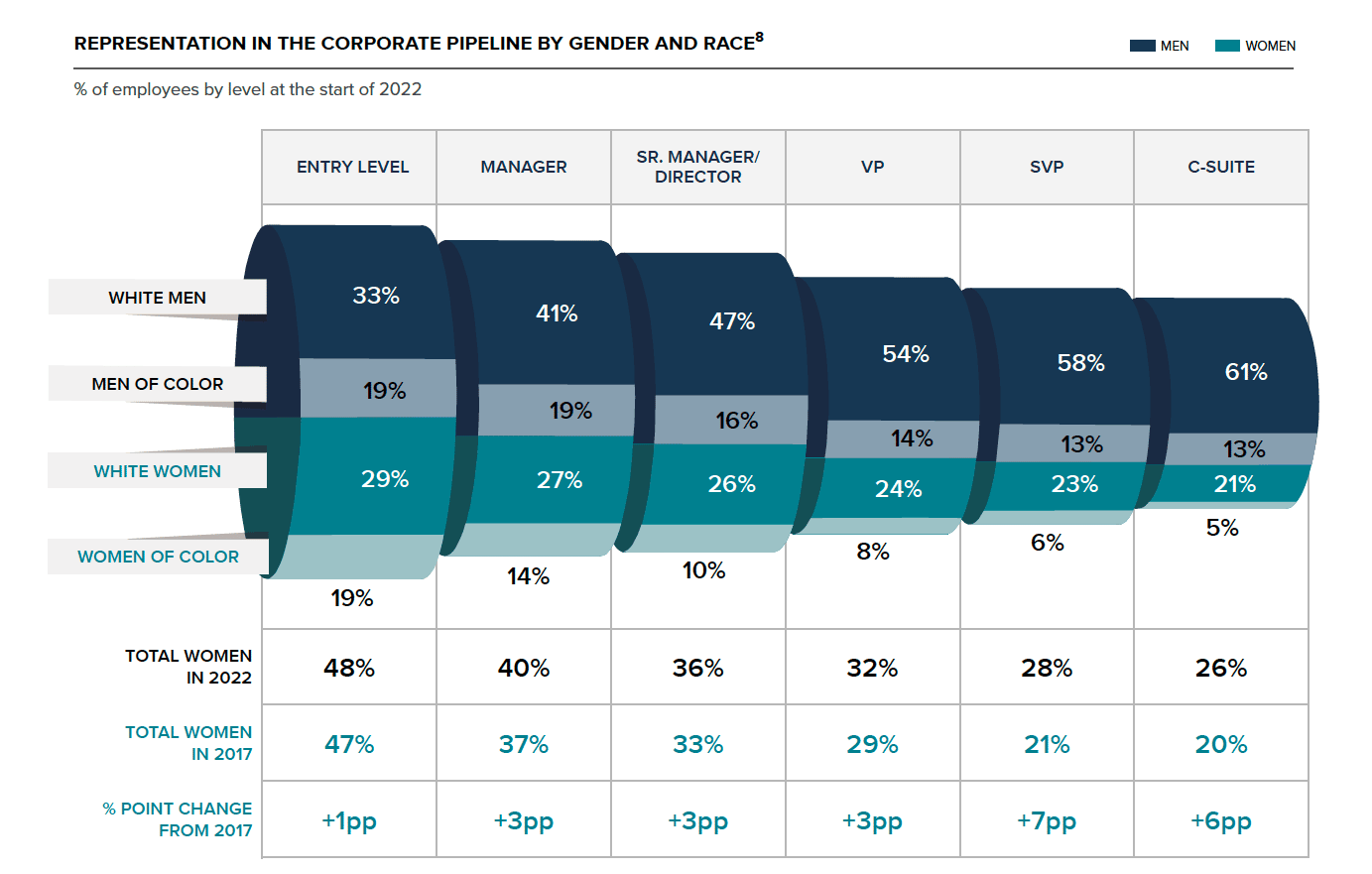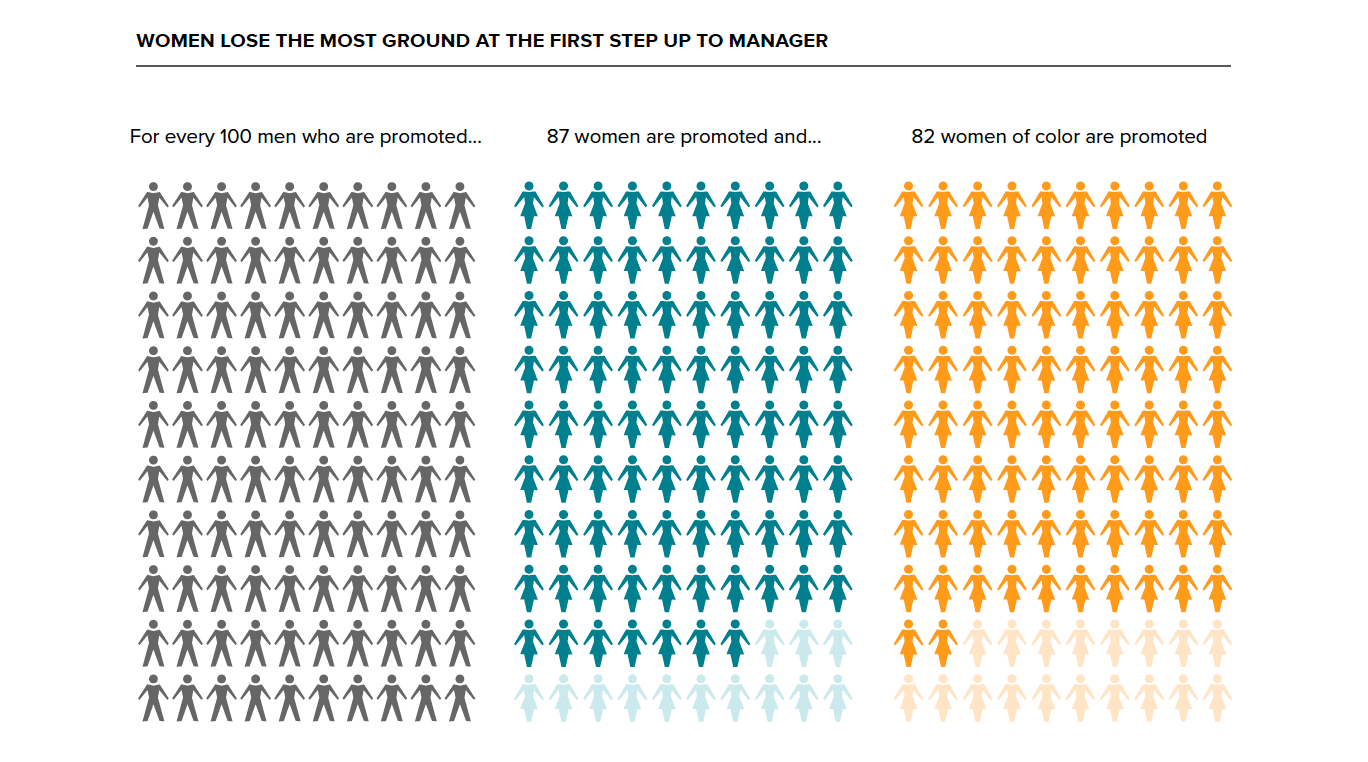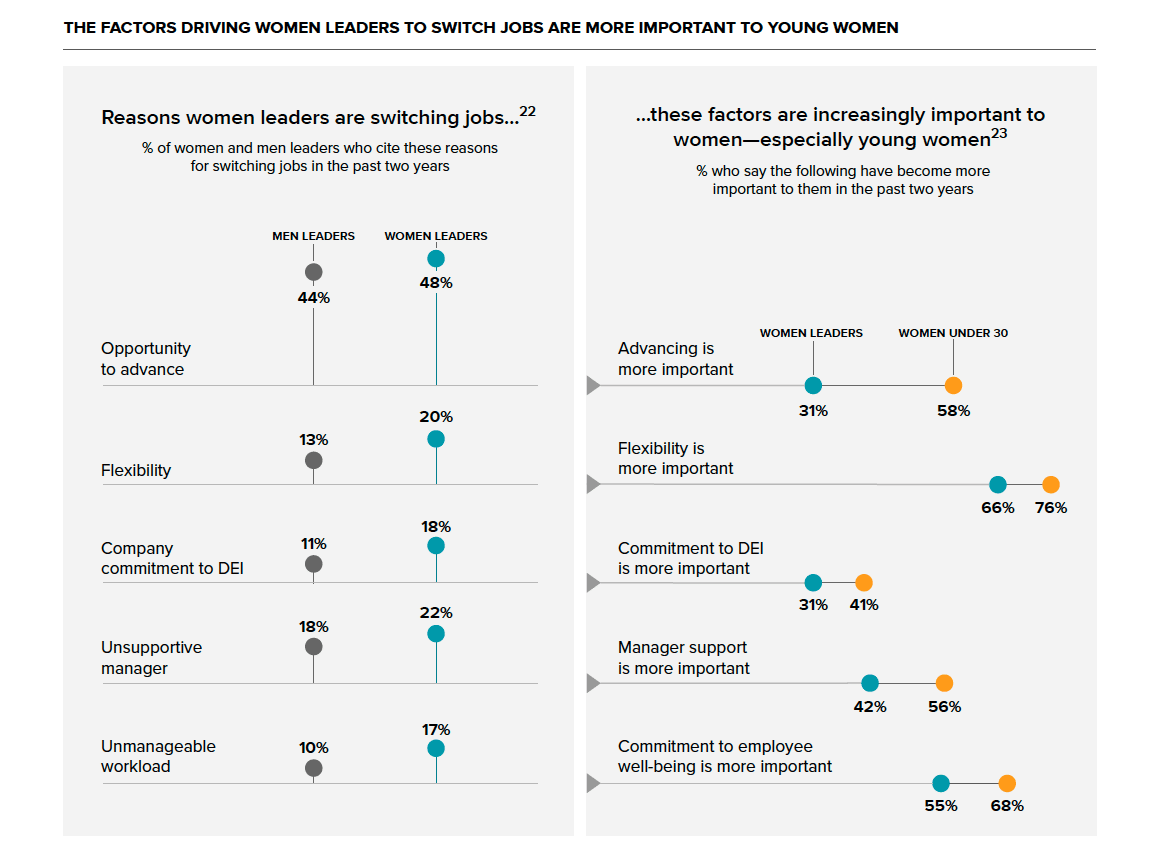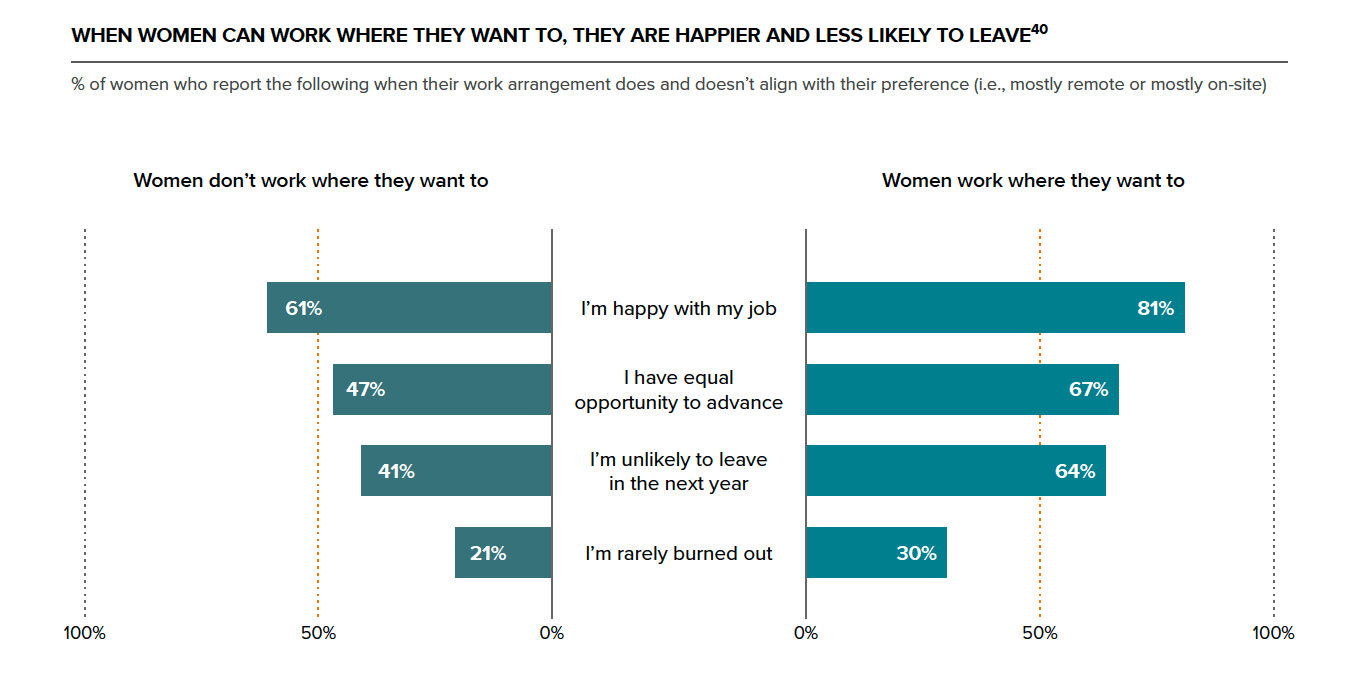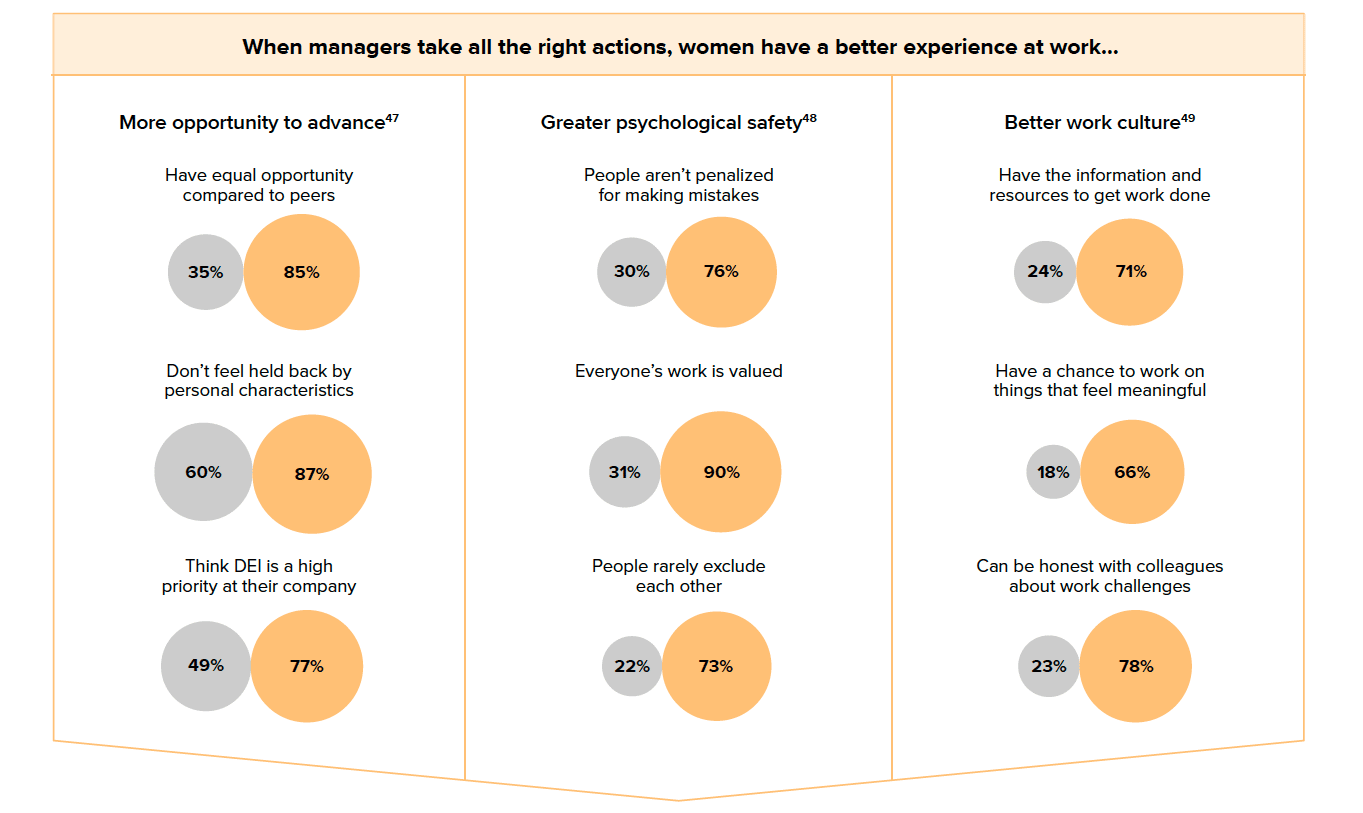Women leaders are switching jobs at the highest rate in years, and at a much higher rate than men in leadership—and companies that don’t take action in response to this trend are at risk of losing hard-won progress toward gender equality, new research from LeanIn.Org and McKinsey & Company shows.
And the damage could be long-lasting—according to the firms’ the annual Women in the Workplace report, the largest study on the state of women in Corporate America, these companies may also struggle to attract and retain the next generation of women leaders.
“We are in the midst of a Great Breakup in corporate America. Women leaders are leaving their companies at the highest rate we’ve ever seen. They aren’t leaving the workforce entirely but are choosing to leave for companies with better career opportunities, flexibility, and a real commitment to DEI,” said Sheryl Sandberg, founder of Lean In, in a news release. “This creates a looming pipeline disaster for companies. The broken rung is still broken, so we aren’t promoting as many women into management as men.”
“Now, senior women, who are disproportionately doing the hard work that employees want around people management and DEI, are leaving for better opportunities elsewhere,” Sandberg continued. “And women, particularly women of color, still face biases at work that make it much harder to advance. Companies need to double down to remove bias from the workplace and make serious investments in DEI, or we are in real danger of losing decades of progress toward women’s equality. The time to act is now.”
This could all have serious implications for companies. Women are already dramatically underrepresented in leadership. For the eighth consecutive year, the “broken rung” remains broken: for every 100 men promoted from entry level to manager, just 87 women and 82 women of color are promoted. Now, companies are struggling to hold on to the relatively few women leaders they have. To put the scale of the problem in perspective: for every woman at the director level who gets promoted to the next level, two women directors are choosing to leave their company.
The reasons women leaders are switching jobs are telling
Women leaders are just as ambitious as men, but they’re more likely to experience microaggressions that signal it will be harder to advance. For example, women leaders are twice as likely as men at their level to be mistaken for someone more junior. Women leaders are also doing more to support employee well-being and foster inclusion, but this critical work is spreading them thin and is rarely reflected in their company’s performance evaluations. While 93 percent of companies take business goals into account in managers’ performance reviews, less than 40 percent do the same for factors like team morale and progress on DEI metrics. And finally, it’s increasingly important to women leaders that they work for companies that prioritize flexibility, employee well-being, and diversity, equity, and inclusion.
“Women have long faced significant challenges to advancement in the workplace, and these findings confirm that serious barriers continue to exist. Yet we have also seen that the companies that take the right steps can—and do—improve the representation and experience for women in their organizations,” said Bob Sternfels, global managing partner of McKinsey & Company, in the release. “To make sustained progress toward gender equality, companies need to focus on getting more women into leadership and retaining the women leaders they have. The ‘broken rung’ is real and small differences early in advancements add up over time.”
“In addition to illustrating the scale of the challenge, this year’s report identifies practices—such as setting goals for representation in management and senior leadership, really investing in coaching and sponsorship, and experimenting with effective hybrid working models—that can help companies deliver on the promise of gender equality in their enterprises,” Sternfels added.
The study also highlights several trends that all companies should be aware of:
The factors driving women leaders to switch jobs are even more important to young women
Women under 30 are increasingly ambitious, and they place a higher premium on working in a flexible, equitable, and inclusive workplace. Young women are also adding valuable diversity to their organizations, and they’re more likely than older employees and men in their age group to actively practice allyship at work.
Women with traditionally marginalized identities continue to have worse experiences at work
Women who face compounding biases based on multiple aspects of their identity, such as their race, sexuality, or a disability, often experience more disrespect and get less support in their workplaces. For example, LGBTQ+ women and women with disabilities are far more likely than women overall to hear critical comments about their demeanor and appearance.
Flexibility is here to stay
Two years after the pandemic forced corporate America into a massive experiment with flexible work, enthusiasm for flexibility in all its forms is higher than ever. A vast majority of employees prefer remote or hybrid work, and more than 70 percent of companies say offering remote and hybrid work options has helped them attract and retain more employees from underrepresented groups.
Remote and hybrid work are game changers for women
Only 1 in 10 women wants to work mostly on-site—and it’s not just about flexibility. When they work on-site, women are almost 1.5 times as likely to experience demeaning and “othering” microaggressions compared to when they work mostly remotely.
Managers are key to retaining women, but they need more support
When managers invest in people management and DEI, women are happier, less burned out, and less likely to think about leaving their jobs. But there’s a growing gap between what’s expected of managers and how they’re being trained and rewarded—and that’s apparent in how managers show up. A majority of companies say managers have been expected to do more over the last two years to support employees’ well-being and career development and to promote inclusion on their teams. However, only about half of women say their manager regularly encourages respectful behavior, and less than half say their manager shows interest in their career and helps them manage their workload.
This year’s report speaks to concrete actions companies can take to retain and advance women and build more equitable and inclusive workplaces, including data-driven recommendations for fixing the broken rung, evaluating remote employees fairly, and recognizing managers who invest in DEI. Based on an analysis of top-performing companies, the report also outlines a series of leading practices that are more prevalent in organizations with a higher representation of women and, in particular, women of color—such as providing formal sponsorship programs specifically for women, offering expanded support for parents like emergency backup childcare, and sharing diversity metrics publicly.
The Women in the Workplace study is conducted in partnership with LeanIn.Org and McKinsey & Company. The first study was released in 2015, and each year examines current issues facing women in corporate America. This year’s report is based on data and insights from 333 companies representing more than 12 million people, along with survey responses from over 40,000 individual employees.


